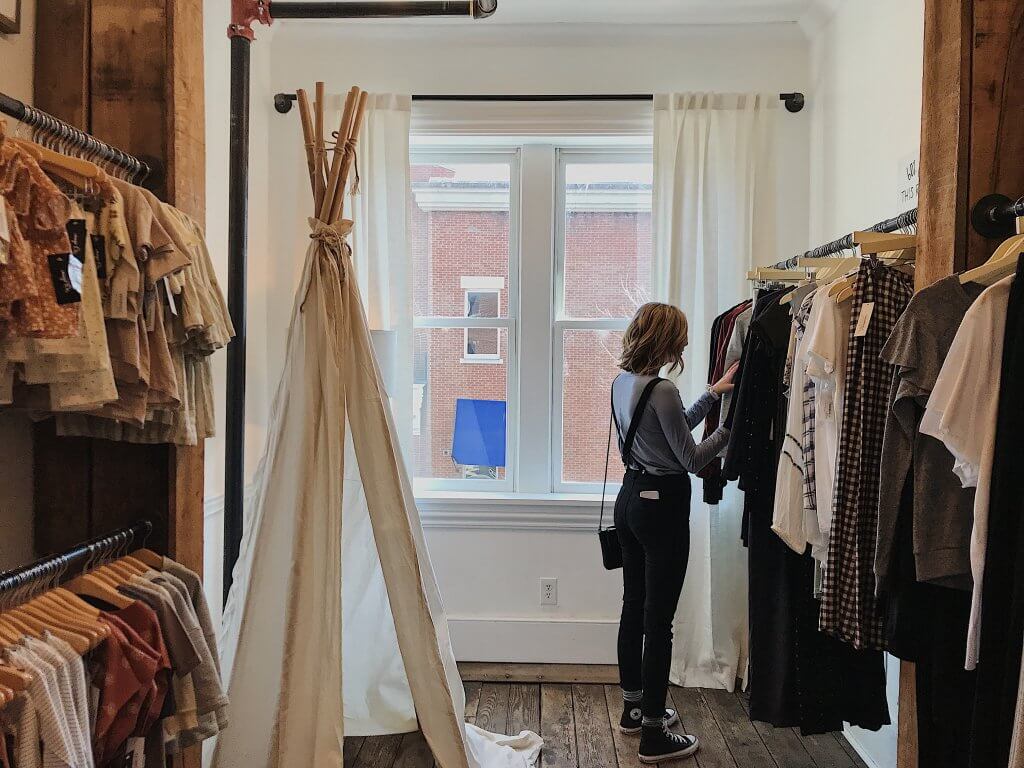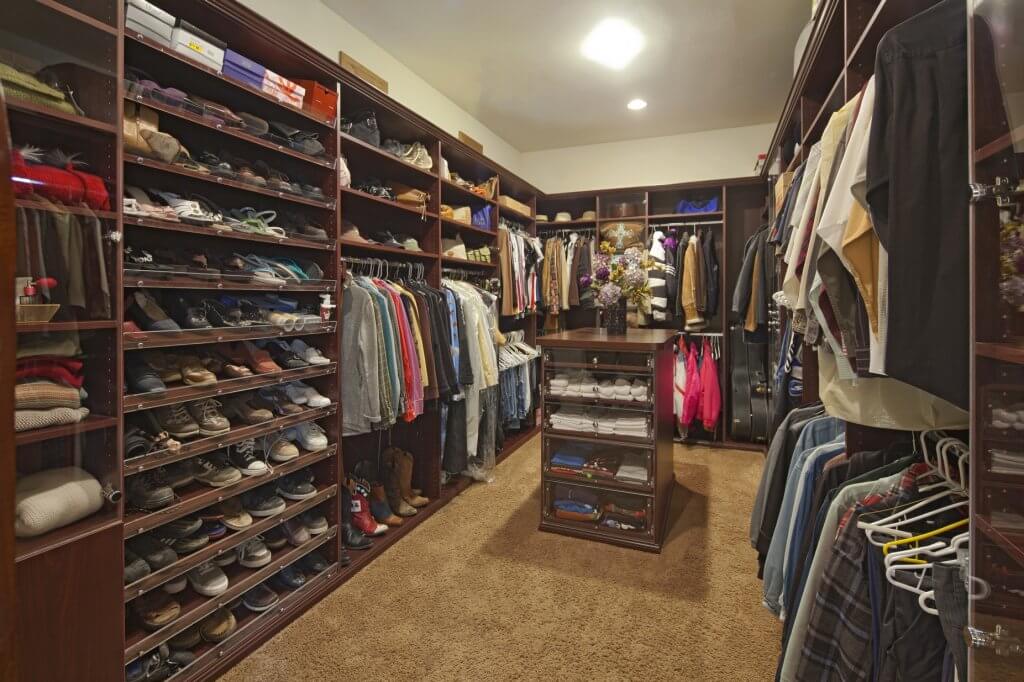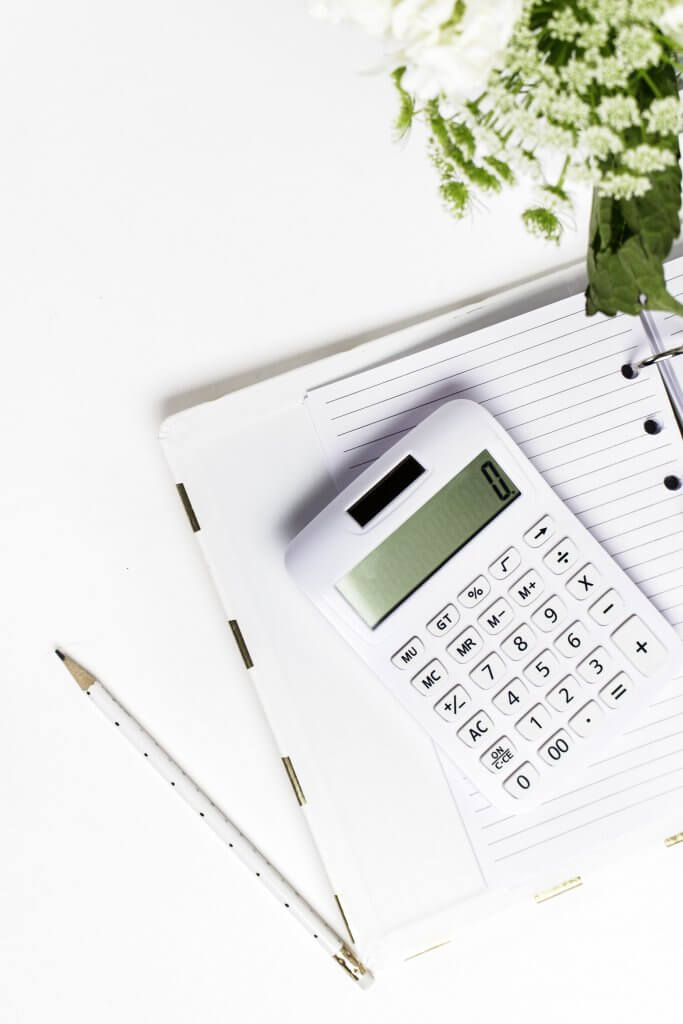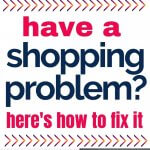Are Amazon boxes showing up on your doorstep and you can’t remember what you ordered? Shopping has never been easier, which can make it more problematic. Today let’s look at what to do if you have a shopping problem.

How to Know if You Have a Shopping Problem
Before we look at what to do if you have a shopping problem, it’s important to first know whether or not it’s an issue for you. Here are some indicators that you may have a shopping problem.
1. The UPS, Fed Ex, and Amazon Prime drivers all know you by name
You have deliveries constantly showing up at your door. You don’t remember what you even ordered as they arrive.
The delivery drivers all know you by name and it is out of the ordinary for them not to be at your house each week.
While I know there are some things, like groceries, that can be delivered, often for many the orders aren’t just food.
Online shopping has made buying things so easy. With just a few clicks on the computer, items are on their way to your home within days.
If you’ve found excess and unnecessary items stacking up from online purchases then you may have a shopping problem.

2. You have credit card debt from overbuying
With the ease of buying and being able to charge to a credit card, it’s not difficult to accumulate credit card debt.
Advertisers are great at convincing us we need or deserve things we cannot afford. They aren’t out for your best interests, to you need to be.
Having a greater awareness of messaging is helpful in working through this shopping problem.
When you look over your statements at the end of the month, what do you notice? How much money are you spending on nonessential items?
At a time when more and more people are getting into credit card debt, it’s increasingly important to be aware of your finances.
Set aside some time to analyze what you are spending and see if there are ways you can save. Looking at numbers can be enlightening to help you see whether or not you have a shopping problem.
3. Excess items are taking over rooms in your home
Did you ever watch the extreme couponing shows when they were on? One of the things that struck me was how the deals had taken over the couponer’s home.
They would have racks set up in bedrooms to store the toothpaste, detergent, and shampoo they were buying at a highly discounted cost. While saving money is a good idea, buying far more than you need and stockpiling is a different situation.
If the stuff you are buying is taking over your home to the extent that your rooms no longer are able to function normally, then you have a shopping problem.
What you own is meant to enhance your life in some way, not burden you or prevent you from being able to use your home normally.

4. Your closet is full of items with the tags still on
When you look in your closet, do you have items that have never been worn? If there are many items with tags still attached, you may have a shopping problem.
Clothes aren’t the challenge for everyone, so if that’s not you, perhaps you have items still in an unopened box.
If you are continually purchasing new things and not using them, it’s problematic. No one wants to waste money on things they never use.
Assess what new items you’ve purchased and not worn or used. Ask yourself why you bought it and why you haven’t used it. Be real with yourself as you sort out your purchasing habits.
5. Shopping addiction
What starts as a shopping problem can turn into a shopping addiction. If shopping is consuming your thoughts and taking up a significant portion of your time, you may want to consider if outside help is needed.
Shopping addiction can become a compulsion. If your shopping habits are hurting your health and well-being and your relationship with others, find a therapist to help you work through it.
There are differences between bad habits that developed and problems that are significantly negatively impacting your life.
Be aware of your behaviors and how your emotions and thoughts are tied to your shopping habits.

What to do if you have a shopping problem
Recognizing that you have some challenges with shopping and have developed some bad habits is the first step toward changing it. Here are 5 tips to help you along the way.
1. Create new habits
In 2011, a study was done to see how much time women were spending shopping. While these numbers have likely shifted in the last decade to take away from in-person shopping, I’m guessing much more is now being spent shopping online.
Shopping has been a hobby for quite a while, but if shopping has become a problem for you, it’s time to find some new habits.
If shopping has been a coping mechanism for you, look for other ways to manage your feelings. Some alternate options include going for a run or walk, having coffee with a friend, or reading a book.
As you seek to be more intentional with shopping, think about what replacement behaviors would be enjoyable for you.
Avoiding temptation
Part of developing new habits is also recognizing where your areas of temptation are. It could be the Target dollar aisle, Hobby Lobby seasonal decor, or the home goods department at TJ Maxx.
Regardless of what your shopping temptations are, consider how you could alter them. For some, window shopping is too much. Others could handle it fine but may need to avoid bringing ways to pay to avoid buying.
In some cases, you may just need to avoid it all together. If it’s in a store where you buy groceries, avoid the aisles that are problematic for you or find an alternate place to shop.
Do you receive emails from stores that make you want to buy? Unsubscribe from them to help you avoid temptation and declutter your inbox in the process.

2. Cancel Prime
Amazon prime is convenient and for many it doesn’t become a problem. However, if you’ve noticed that you order more than you want and need, consider whether or not it’s time to drop the membership.
Another option is creating new behaviors when shopping on Amazon. Keep items in the cart for at least 24 hours before purchasing on items you are not positive that you need.
Take the time to think through it rather than just quickly ordering. If spending a lot of time browsing on Amazon has become a problem for you, install a time tracker to your phone where you can limit your time on the ap.
Stay Focused is a great option for Android phone that also works with Chrome. Consider deleting the Amazon app or any other shopping apps from your phone too in order to be more thoughtful with making purchases.
3. Delete saved credit card numbers
While saving your credit card number on sites you normally shop on may save you some time, it also makes it easier to make purchases mindlessly.
When you have to take the time to go get your card from your wallet and enter the numbers it gives you more time where you have to think about what you are doing.
If you’ve gotten into credit card debt, consider going to a cash system as you work to get your way out of debt. The goal is to require that you take a bit more time to think it through before you make purchases.
4. Try a no spend challenge
If you’re competative, a no spend challenge is a great idea. Maybe clothes are the thing you’ve been buying too much of. Challenge yourself to not buy any clothing for 6 months or a year.
Create a budget and challenge yourself to stick to it without buying excess. Decide in advance what your reward will be for sticking to your no-spend challenge.
You might surprise yourself with what you learn as you challenge yourself to do something different.

5. Find an accountability partner
Finding a trusted accountability partner can be really helpful as you seek to change your habits.
Your accountability partner should be someone who will be honest with you and challenge you when you need it. Have regular check-ins so that you know someone will be asking you how you’re doing.
People are often motivated by the expectations of others. If it’s something you’ve struggled to change on your own, having an accountability partner can definitely help.
How simplifying changed my shopping habits
When I began decluttering my home and life years ago, I also had some realizations about my shopping habits which helped change my behavior. Here are some of the changes I made.
1. Lessons learned while decluttering
Decluttering forced me to look at what I owned and why I owned it. I examined the reasons I had clutter in my home.
Facing the guilt and regret was not easy or fun, but it did teach me a lot about my shopping habits. I learned that settling and buying things that weren’t quite right created clutter.
It made me more particular when I would shop for something. I didn’t want to look in my closet and see things I had settled for. I’m particular about fabric and fit, which means I buy a lot less as I’ve raised my standards.
2. Less shopping for fun
After decluttering and dealing with the realizations and lessons that came along with it, I made a conscious choice to shop less. I saw what buying great deals and even getting things for free had done to my home and my feelings about my home.
Garage sale shopping was something I’d enjoyed and I’ve always been a fan of getting great deals, but I now mostly avoid it completely unless there is something very specific that I am looking for.
I use that time now to read, write, or spend more time with my family. I’ve found that other activities are much more enjoyable than shopping.
3. Creative solutions
With shopping less, I’ve also learned to be more creative in problem-solving, rather than continuing to buy additional products. I’ve found ways to make do instead of buying new.
Sometimes that means using something I have to make it work. Other times it means borrowing from a friend, family member, or neighbor.
Shopping less saves you money and helps you to think more creatively about how to problem-solve.
Through the process, I’ve learned to be happier with less in choosing to live more simply in a culture that focuses on consumerism.
I hope these tips for what to do if you have a shopping problem has been helpful for you.
Want to stay up to date with The Simplicity Habit? Sign up on the form below to get weekly simplifying and decluttering tips sent to your inbox! You’ll also get 8 Quick Wins for Decluttering for some quick tasks you can do to start the decluttering process.



Last year 2222 Christmas was the last time I shopped. For Christmas of course!! Then I stopped shopping one year except for needed items. I didn’t buy anything until April when I needed warm weather PJ’s. Then I shopped with Birthday money & Christmas money when my favorite shoes store SAS had a buy one get one half off sale. I bought two pairs of shoes!!~ I’m very happy with my purchases for 2023!! Now in 224 I’m not shopping again and I’m happy!!
Fortunately my shopping problem is now under control, but I must be ever mindful that it can always strike up again. Decluttering my home was a powerful disincentive to shopping, After ridding my home of excess, the last thing I wanted was to fill up every corner and surface again.
Most dangerous shopping was wardrobe. I went on a six month shopping spree that brought multiple packages to my door daily. Now I shop sporadically, and intentionally rather than impulsively. It’s nice to have control, but as said earlier, that can be fleeting if I’m not mindful.
We’ve now entered spring and I’ve embraced a moratorium on anything not a necessity. Food and toiletries are necessary. For the life of me, I can’t think of anything else.